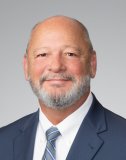The U.S. bankruptcy system has two primary goals:
- To give honest but unfortunate debtors a “fresh start” and
- To provide an orderly system for paying creditors.
In effect, this means that debtors enter bankruptcy to reduce or eliminate their debts. Creditors are repaid only through the bankruptcy process. Even if creditors are paid less than 100% of what the debtor owes, after the bankruptcy process is complete, the creditors are barred from collecting any additional money. This is referred to as “receiving a discharge” or “discharging debt”. Of course, there are some exceptions to the general rule.
Exceptions to certain debts from discharge
While most debts can be discharged in bankruptcy, Section 523 of the Bankruptcy Code provides exceptions to certain debts from discharge. Many of those debts – including child support/alimony, student loans, and certain taxes – are automatically excepted from discharge, meaning the creditor does not have to do anything to preserve their claims against the debtor. After the debtor completes the bankruptcy process, the creditor can continue collecting through ordinary means (such as monthly payments) or they can use other judicial processes
Adversary proceeding process
For certain other debts, however, the creditor must file a separate lawsuit in the bankruptcy court, called an adversary proceeding. This lawsuit is to have the creditor’s claim declared non-dischargeable so that it will survive the bankruptcy case. Most commonly, such suits relate to debts arising from (a) fraud, (b) breach of fiduciary duty, and (c) willful and malicious injury. In other words, if the debt arises from a bad act by the debtor, the debtor is not afforded the “fresh start”.
- In a chapter 7 case, the complaint for non-dischargeability must be filed within 60 days of the First Meeting of Creditors.
- In a chapter 11 case, the Court sets the deadline, but it must be no later than the first date set for the hearing on confirmation of a plan of reorganization.
Many fraud claims in non-dischargeability suits allege that the debtor made a material misrepresentation in writing about its financial condition. That could be a misrepresentation about the value of assets, prior liens on the assets pledged as collateral, or a particular source of income the debtor would use to pay the debt.
Common breach of fiduciary claims include instances where a fiduciary has engaged in self-dealing or has otherwise preferred its own interests. These claims often arise in the situation where the debtor owed a formal fiduciary to its creditors, for example, lawyers, trustees, executors or administrators of a decedent’s estate, or business partners. They can also arise where there is an informal fiduciary duty, which in Texas, requires a showing that the parties had a special relationship of trust and confidence.
Non-dischargeability claims for willful and malicious injury can encompass many types of claims. The underlying claim may relate to intentional torts that caused bodily injury (such as battery), the Texas Deceptive Trade Practice Act, the Texas Theft Liability Act, or intentional torts that cause financial injury, such as conversion.
Non-dischargeability lawsuits are governed by federal bankruptcy law and are decided by the Bankruptcy Judge without a jury. In some instances, the creditor may have already obtained a judgment against the debtor for the underlying claim and only has to prove that the judgment is non-dischargeable.
If the creditor has not already obtained a judgment, it will have to prove its underlying claim and the non-dischargeability claim simultaneously. In that instance, the bankruptcy court would enter a judgment stating that the creditor proved its underlying claim (for example, breach of fiduciary duty), award monetary damages to the creditor, and declare that the judgment is non-dischargeable.
Judgments of the bankruptcy court can be appealed to the District Court, then the Circuit Court of Appeals, and finally (but rarely), the United States Supreme Court.
Conclusion
Non-dischargeability claims are a powerful tool for creditors. The preservation of the claim and the ability to collect on the debt after the bankruptcy process concludes is a valuable right that should be evaluated by a bankruptcy specialist early in the bankruptcy procedure.
Sources:
11 U.S.C. § 523
28 U.S.C. § 158
Federal Rule of Bankruptcy Procedure 4004
Federal Rule of Bankruptcy Procedure 7001
Photo by Karolina Grabowska from Pexels
Important links:
https://www.linkedin.com/in/natalie-wilson-866b3729/










